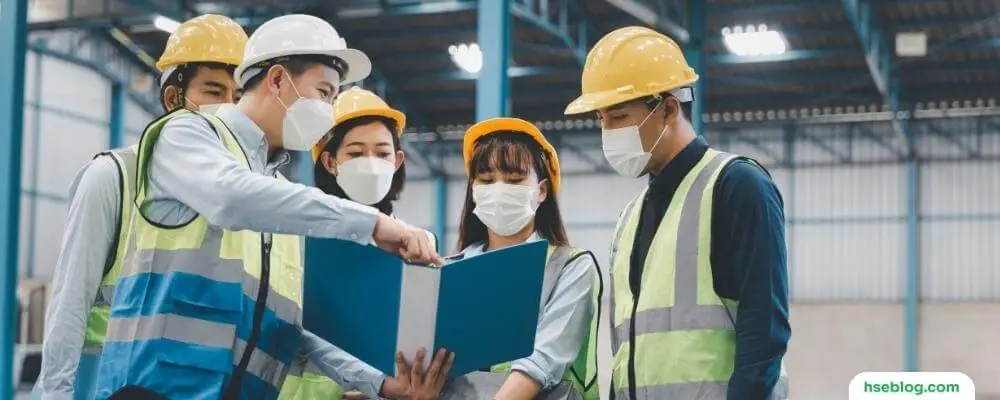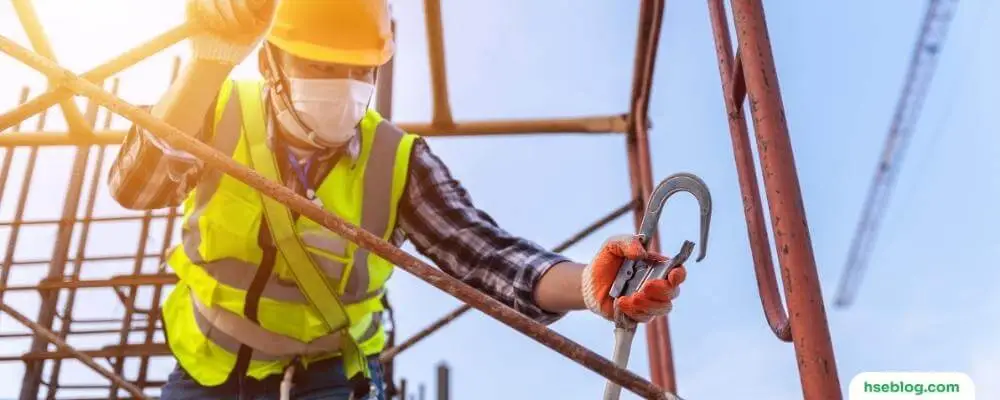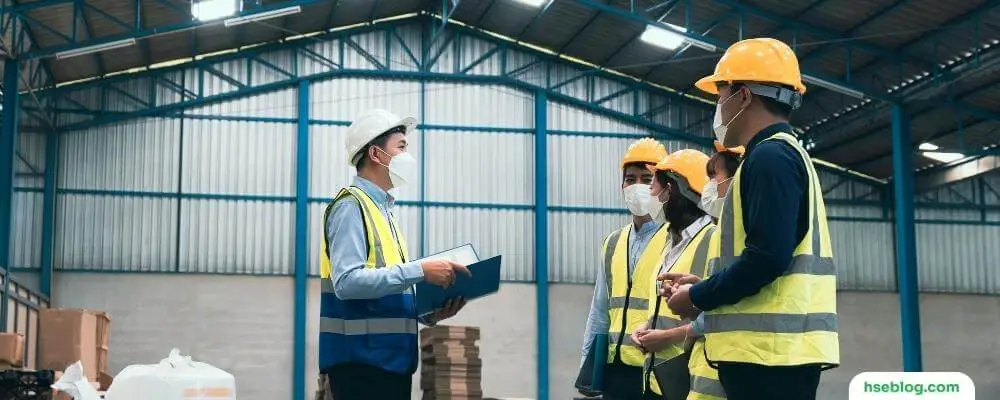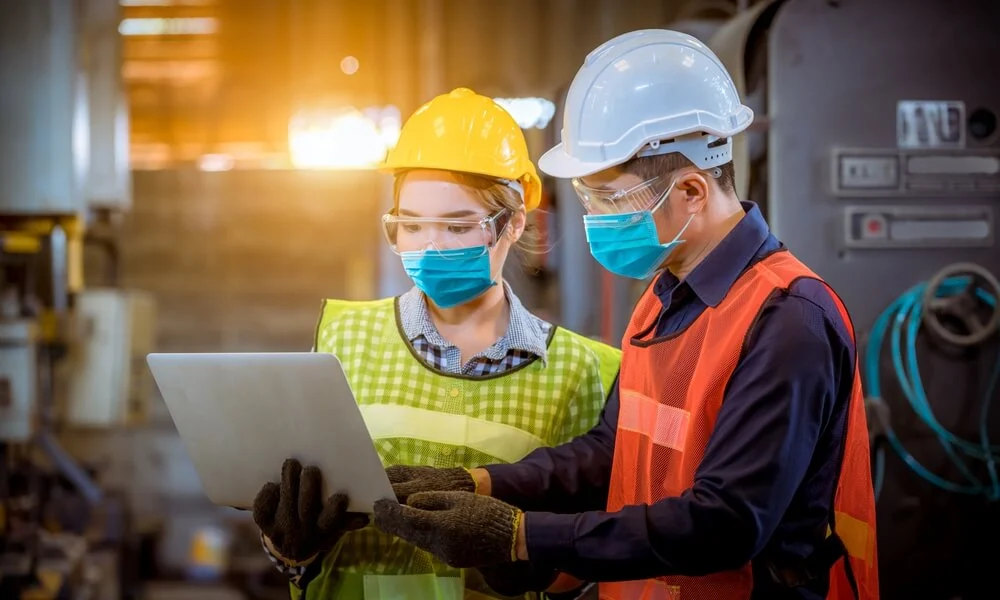Workplace safety remains pivotal to a successful and sustainable organization in today’s fast-paced world. This comprehensive guide delves into the critical topic of occupational safety, its importance, and how we can uphold it. Understanding the potential risks at our workplaces, how to mitigate them, and the extensive benefits of prioritizing safety is fundamental for employers and employees.
As we navigate through this guide, we’ll explore the varying aspects of workplace safety, unravel the multitude of benefits that come along with a safe work environment, and impart practical tips to maintain personal safety at work. Whether you’re a business leader looking to improve your organizational safety protocols or an employee aiming to enhance your personal safety at work, this blog will provide the essential information and insights you need. So, let’s dive into workplace safety, a cornerstone of healthy and productive work life.
Safety At Work
Safety at work, or occupational or workplace safety, refers to the measures, guidelines, and procedures to protect employees from hazards they may encounter while performing their jobs. These physical hazards include falls, machinery injuries, fires, or exposure to harmful substances. They can also be psychological or social, like stress, harassment, or violence at work.
Workplace safety aims to create a healthy and safe environment where workers can perform their tasks without risk to their well-being. This is achieved through a variety of measures, including:
- Risk Assessment: This involves identifying potential hazards in the workplace and assessing the risks associated with them. It is an important step in developing a safety plan as it allows for implementing measures to control these risks.
- Training: All employees should receive safety training appropriate to their job role. This might include instructions on safely using machinery, handling hazardous substances, or what to do in a fire or other emergency.
- Personal Protective Equipment (PPE): In some jobs, workers must wear special gear to protect them from hazards. This could include hard hats, safety glasses, ear plugs, high visibility vests, gloves, or respiratory protective equipment.
- Emergency Procedures: Every workplace should have procedures for dealing with emergencies. This might include fire evacuation plans, first aid provisions, or procedures for handling hazardous substance spills.
- Health Surveillance: In some workplaces, especially where workers are exposed to harmful substances or extreme conditions, surveillance is required to monitor workers’ health over time.
- Workplace Design: The design of the workspace can also contribute to safety. This could involve ensuring sufficient lighting, ergonomically designed workstations, or safely positioned machinery.
- Policies and Regulations: Enforcing safety policies and adhering to regulations is key to maintaining a safe workplace. This includes adherence to guidelines set by bodies like the Occupational Safety and Health Administration (OSHA) in the United States or similar organizations in other countries.
Workplace safety is not only important for the well-being of employees, but it also has economic implications. A safe workplace can reduce costs associated with accidents and injuries, like medical expenses and lost productivity. Furthermore, it contributes to employee satisfaction, morale, and, thus, productivity.

10 Benefits Of Safety At Work
Prevention of Accidents and Injuries: The most direct benefit of workplace safety is the prevention of accidents and injuries. This protects employees from harm and provides them with a secure environment in which they can work.
- Improvement in Employee Morale and Satisfaction: Employees who feel that their safety is taken seriously will likely have higher job satisfaction and morale. This can lead to better productivity and a more positive workplace culture.
- Reduction in Absenteeism: A safer workplace reduces the likelihood of injuries and illnesses leading to employee absences. This means fewer disruptions and better overall productivity.
- Compliance with Laws and Regulations: Many countries have laws and regulations requiring certain workplace safety standards. Maintaining safety at work ensures compliance with these, preventing legal issues and potential fines.
- Reduction in Workers’ Compensation Claims: Accidents and injuries can result in expensive workers’ compensation claims. By investing in safety measures, employers can significantly reduce these costs.
- Increased Productivity: A safe and healthy workplace enables employees to perform their best, which results in increased productivity. Furthermore, fewer interruptions caused by accidents means more efficient work processes.
- Enhanced Company Reputation: A strong commitment to safety can enhance a company’s reputation, making it more appealing to potential employees, clients, and partners.
- Reduced Employee Turnover: Employees who feel safe and satisfied at work are less likely to leave, leading to lower turnover rates. This can save companies the significant costs of recruiting and training new employees.
- Improvement in Quality of Work: Safe work conditions can lead to a better quality of work. Employees not worried about their safety are more likely to focus on their tasks and perform them accurately.
- Promotion of a Culture of Safety: A company can foster a safety culture by implementing and enforcing safety measures. This means that employees take responsibility for their own and others’ safety, further enhancing the overall safety of the workplace.

How To Stay Safe At Work?
Staying safe at work requires awareness, knowledge, and proactive measures. Here are some key steps to consider:
1. Understand the Risks
In every workplace, some inherent risks and hazards vary depending on the nature of the job. For instance, in a construction site, dangers like falling objects or the operation of heavy machinery pose potential risks to workers.
On the other hand, an office environment may have risks related to ergonomic issues, such as poor workstation setup or hazards like slips and trips. Understanding these risks is crucial as it involves being aware of the potential sources of harm and knowing how to effectively manage and mitigate these hazards to ensure a safe work environment.
2. Follow Safety Procedures
Following safety procedures is a vital aspect of ensuring workplace safety. Employers implement these procedures to minimize risks and hazards within the work environment. These protocols may encompass guidelines for operating machinery, handling hazardous substances, maintaining cleanliness, and organizing the workspace.
By adhering to these safety procedures, employees create a secure work environment, reducing the chances of accidents or injuries. All individuals in the workplace need to understand and comply with these procedures to maintain a safe and healthy working environment.
3. Use Personal Protective Equipment (PPE)
Personal Protective Equipment (PPE) is crucial in ensuring safety in certain occupations. Depending on the nature of the job, specific types of PPE are required to protect individuals from potential hazards. For example, on a construction site, wearing hard hats shields workers from falling objects, safety glasses provide protection against flying debris, and gloves prevent cuts or exposure to harmful substances.
It is essential to use the provided PPE consistently, ensuring it fits properly and is in good condition. By wearing the appropriate PPE, individuals minimize the risk of injuries or illnesses, promoting a safer working environment.

4. Attend Safety Training
Attending safety training sessions, employers provide is vital to promoting workplace safety. These training sessions cover various topics, including general safety practices and specific procedures related to particular job roles or equipment. Employees gain valuable knowledge, skills, and techniques to mitigate risks and ensure workplace safety by participating in these sessions.
It is essential to apply the lessons learned from safety training to daily tasks, incorporating safe practices into routine work activities. By staying informed and updated with safety protocols, employees contribute to creating a safer work environment for themselves and their colleagues.
5. Maintain a Good Posture
Maintaining good posture is crucial for promoting physical well-being and preventing musculoskeletal issues in the workplace. Ergonomics, the science of optimizing efficiency in the working environment, emphasizes the importance of proper posture. Prolonged periods of sitting with poor posture can contribute to back pain and repetitive strain injuries. To maintain good posture, it is essential to make ergonomic adjustments, such as ensuring that your chair and desk are properly adjusted to support your back and align your body.
Additionally, positioning your computer screen at eye level reduces strain on the neck and promotes a more comfortable working posture. By consciously maintaining good posture, individuals reduce the risk of physical discomfort and potential long-term health problems associated with poor ergonomics.
6. Take Regular Breaks
Regular breaks are essential for maintaining productivity, focus, and overall well-being in the workplace. Continuous work without breaks can lead to physical and mental fatigue, impairing concentration and increasing the likelihood of accidents or errors. By incorporating short breaks, even for just a few minutes every hour, individuals can alleviate fatigue, reduce stress levels, and prevent strain on the body.
During these breaks, engaging in stretching, walking around, or shifting focus away from work tasks helps refresh the mind and body, promoting better alertness and performance when returning to work. By prioritizing regular breaks, employees can enhance their productivity, reduce the risk of workplace incidents, and support their overall health and well-being.

7. Keep Work Areas Clean and Organized
Maintaining clean and organized work areas is crucial for preventing workplace accidents and promoting a safe environment. Cluttered or disorganized spaces can pose various hazards, such as tripping over objects, getting entangled in loose cords, or slipping on spilled substances. By regularly cleaning and organizing workspaces, individuals ensure that walkways are clear and unobstructed, reducing the risk of trips and falls. Proper management of cords and cables minimizes the chances of accidental tugs or entanglements.
Additionally, storing tools and equipment safely when not in use prevents potential injuries caused by mishandling or accidental contact. By prioritizing cleanliness and organization, employees contribute to a safer work environment that minimizes the risk of accidents and enhances overall efficiency.
8. Report Unsafe Conditions
Reporting unsafe conditions is a crucial step in maintaining a safe work environment. Employees who notice potential hazards or unsafe conditions must immediately report them to a supervisor or safety representative. This can include malfunctioning equipment, unaddressed spills or leaks, inadequate safety measures, or observations of coworkers not following established safety protocols.
Timely reporting enables swift action, addressing the identified risks before they lead to accidents or injuries. By actively reporting unsafe conditions, employees contribute to a proactive safety culture, ensuring that potential hazards are promptly addressed and mitigated and promoting the well-being and safety of everyone in the workplace.
9. Handle Equipment Properly
Proper handling of equipment is essential for maintaining workplace safety and preventing accidents. It is crucial to adhere to the manufacturer’s instructions and your workplace’s safety procedures when operating equipment. This includes understanding the correct operation, maintenance, and safety precautions associated with each specific piece of equipment. If there is any uncertainty or lack of knowledge regarding the proper use of equipment, it is important to seek training or assistance from qualified individuals.
By correctly handling equipment, employees reduce the risk of malfunctions, damage, or injuries resulting from improper usage, ensuring a safe working environment for themselves and their colleagues.

10. Stay Alert and Focused
Staying alert and focused is crucial for maintaining workplace safety and preventing accidents. Many workplace incidents occur due to a brief lapse in attention or concentration. It is important to fully engage in tasks involving potential risks or hazards. Avoid distractions such as personal devices or unrelated conversations that divert your attention from the task.
Additionally, resisting the temptation to rush through tasks is vital, especially when working with dangerous equipment or substances. Taking the time to perform tasks carefully and attentively significantly reduces the chances of errors or accidents. By staying alert, focused, and mindful of potential risks, employees contribute to a safer work environment for themselves and their colleagues.
11. First Aid Knowledge
Basic first aid knowledge is invaluable in the workplace as it enables individuals to respond promptly and effectively to minor injuries or health emergencies. First aid knowledge equips employees with the skills and confidence to provide immediate assistance until professional medical help arrives. It includes essential techniques like cardiopulmonary resuscitation (CPR) to revive someone who has stopped breathing, proper treatment of minor burns or wounds, and knowing how to respond in situations like choking.
By possessing first aid knowledge, employees can mitigate the severity of injuries, provide comfort to those in need, and potentially save lives in critical situations. It empowers individuals to be proactive in ensuring the well-being of themselves and their colleagues, fostering a safer and more secure work environment.
Remember, while employers must provide a safe work environment, employees also have a role in maintaining safety at work. By staying informed, following procedures, and looking out for potential hazards, you can contribute to a safer workplace.
Conclusion
Safety at work, often called occupational or workplace safety, pertains to the policies, procedures, and measures implemented to protect employees from potential hazards they may encounter in their work environment. These hazards can range from physical dangers like accidents or exposure to harmful substances to psychological stresses such as harassment or excessive workload. Maintaining a safe workplace carries significant benefits, including the prevention of accidents and injuries, improved employee morale and satisfaction, reduced absenteeism, adherence to laws and regulations, and increased productivity, to name a few.
Staying safe at work involves understanding the risks associated with one’s job, adhering to safety procedures, using appropriate personal protective equipment, participating in safety training sessions, maintaining good posture, taking regular breaks, keeping the work area clean and organized, promptly reporting unsafe conditions, handling equipment properly, staying alert and focused, and having basic first aid knowledge. Ultimately, workplace safety is a shared responsibility, with everyone playing a crucial role in fostering a safe and healthy work environment.

